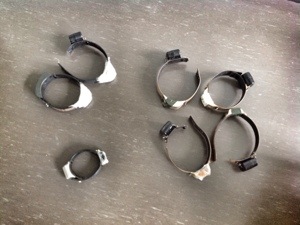We have a new quantitative ecologist joining our ranks, Mollie Brooks, who is a recent PhD graduate from University of Florida, Gainesville. Fresh out of Ben Bolker’s group, Mollie is bringing with her much needed skills in statistical and demographic analysis, and to our pleasant surprise, in baking!
During her postdoc, Mollie will contribute to our research projects on early warning signals and resurrecting past eco-evolutionary responses.


 Together with Dr. Aurelie Cohas and Prof. Dom Allain (University of Lyon), who have been working on an Alpine marmot population in French Alps for over 20 years, we have been thinking on a research plan to investigate the physiological, behavioural and demographic responses of the rotund rodents to environmental change. All we needed was an eco-physiologist, who would help us to better understand the hibernation physiology, and
Together with Dr. Aurelie Cohas and Prof. Dom Allain (University of Lyon), who have been working on an Alpine marmot population in French Alps for over 20 years, we have been thinking on a research plan to investigate the physiological, behavioural and demographic responses of the rotund rodents to environmental change. All we needed was an eco-physiologist, who would help us to better understand the hibernation physiology, and  Couple weeks later, he was hugging not-so-teddy bears in Northeastern Turkey. One thing led to another, and Gabriele is now (his successful defence in Feb permitting) a postdoc in our group specialising on animal movement ecology. His research plans are shaping up and will involve carnivores as dangerous as
Couple weeks later, he was hugging not-so-teddy bears in Northeastern Turkey. One thing led to another, and Gabriele is now (his successful defence in Feb permitting) a postdoc in our group specialising on animal movement ecology. His research plans are shaping up and will involve carnivores as dangerous as